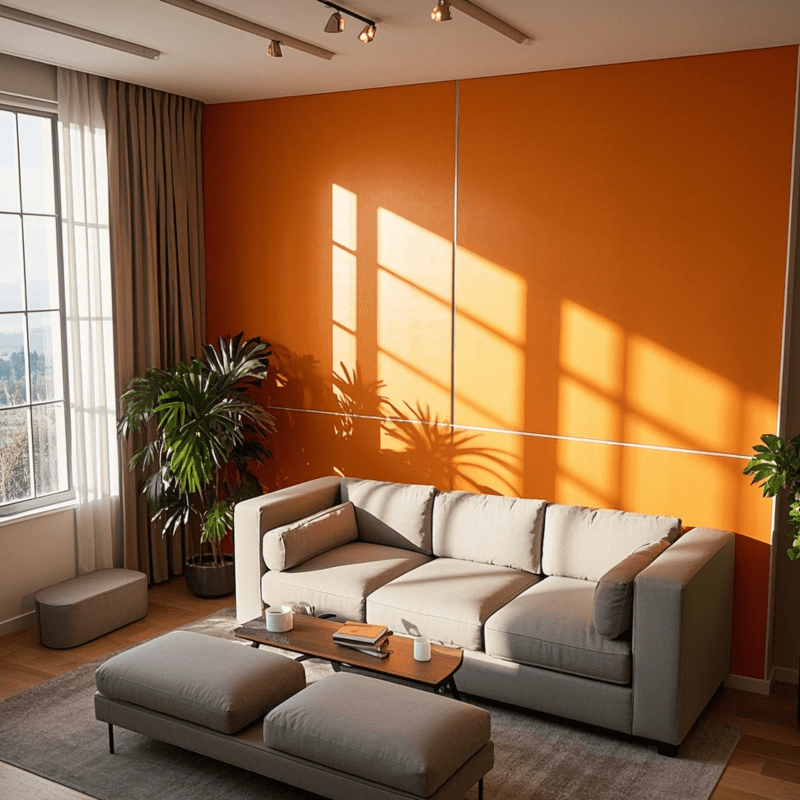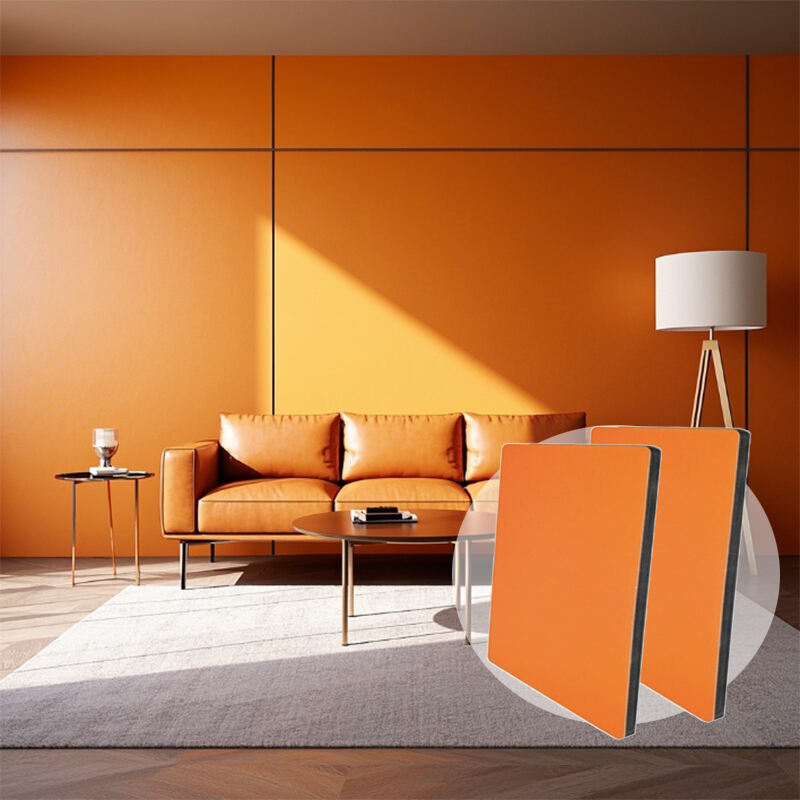Ефективність установки: стінкові дошки проти штукатурних стін
Зменшення потрібностей у праці завдяки попередньо вирізаним панелям
Використання попередньо вирізаних панелей для стін робить процес монтажу набагато швидшим, адже все поставляється готовим до використання прямо з коробки. Підрядники зазначають, що витрати на робочу силу скорочуються приблизно на 30%, коли працюють з цими панелями, у порівнянні з традиційними методами штукатурення, адже працювати з ними набагато простіше. Зекономлений час означає, що робітники довше не затримуються на майданчику, що дозволяє бригадам одночасно виконувати кілька завдань, суттєво підвищуючи загальну продуктивність. Коли для кожного будівельного майданчика потрібно менше робочих, стає зрозумілим, чому саме ці попередньо вирізані варіанти схвалюють багато забудовників сьогодні, чи то вони працюють над будівництвом багатоквартирних комплексів чи приватних будинків у різних частинах міста.
Немає затримок у вилікуванні порівняно з традиційними методами штукатурки
Гіпсокартонні перегородки монтуються значно швидше, ніж штукатурні стіни, яким потрібен тривалий час для висихання. Проекти таким чином завершуються швидше. Комерційні об'єкти можуть розпочати роботу раніше, що означає, що власники бізнесу почнуть отримувати прибуток швидше. Для забудовників ця швидкість безпосередньо перетворюється на кращий ROI, адже об'єкти стають прибутковими активами достроково. Будівельні компанії також виграють, тому що швидше завершують проекти, отримують оплату швидше й звільняють ресурси для інших робіт. Порівняно з традиційними методами штукатурення, гіпсокартон просто більше вигідний з фінансової точки зору для всіх учасників будівельного процесу.
Структурні переваги сучасних стінних систем
Легкі гіпсові плити зменшують навантаження на будівлі
Гіпсокартон досить легкий порівняно з іншими будівельними матеріалами, що насправді суттєво впливає на ефективність конструкцій. Оскільки він не важкий, архітектори мають більше свободи в проектуванні будівель, адже навантаження на систему фундаменту зменшується. Якщо фундаментам не потрібно витримувати такі великі навантаження, будівники можуть використовувати простіші рішення у зведенні каркасів, що зазвичай означає загалом нижчі витрати на будівництво. Зменшена вага також допомагає скоротити використання матеріалів у всій конструкції, що є дуже важливим у сучасному русі екологічного будівництва, де всі прагнуть мінімізувати відходи. Ми бачимо цю перевагу скрізь — від невеличких приватних будинків аж до величезних офісних комплексів, гіпсокартон продовжує залишатися популярним, незважаючи на все більше новіші альтернативи, що з'являються на ринку.
Спрощений ремонт без структурних компромісів
Гіпсокартон став справжнім проривом у сучасному будівництві, тому що він не несе навантаження, що значно спрощує перепланування порівняно з традиційними методами. Власники будинків можуть змінювати простір за власним бажанням, не турбуючись про серйозні конструктивні зміни чи потенційну небезпеку. Візьміть, наприклад, монтаж стін — те, що раніше вимагало тижнів роботи з цеглою або штукатуркою, тепер займає кілька днів завдяки гіпсокартону. Будівельники схвалюють цю гнучкість, адже вона економить час і кошти на проектах. Цю перевагу помітили і ріелтори, особливо ті, хто працює зі старими будівлями, які потребують оновлення, але не витримують масштабних перебудов. Зараз забудовники по всій країні все частіше замовляють системи з гіпсокартону при зведенні нових будинків просто тому, що вони забезпечують оптимальне поєднання можливості подальшої зміни простору зі стабільністю та безпекою конструкції.
Поверхнева ефективність та послідовність закінчення
Заводська однорідність у всіх застосуваннях
Виробники виготовляють стінові плити на ретельно контрольованих заводах, що забезпечує достатньо стабільну товщину та текстуру плит. Коли весь процес виробництва залишається таким регулярним, у подальшому виникає менше проблем під час остаточної обробки стін. Монтажники цінують це, тому що їхня робота проходить безперешкодно, без тих неприємних місць, де поверхня веде себе неочікувано. Однакова якість також означає кращі результати під час фарбування, адже колір рівномірно розподіляється по поверхні, не зграюючись у окремих місцях або не виглядаючи місцями нерівномірно. Для архітекторів і дизайнери, які працюють над сучасними проектами, важливо досягти правильної рівноваги між естетичним виглядом і функціональністю, саме тому багато технічних специфікацій тепер спеціально передбачають використання плит, виготовлених із такою стабільною якістю.

Властивості, що запобігають тріщинам, порівняно з стисканням штукатурки
Гіпсокартонні плити мають перевагу, якої звичайна штукатурка не може забезпечити, коли йдеться про проблеми з тріщинами. Вони стійкі до тих неприємних тріщин, що виникають у штукатурних стінах з плином часу через усадку. Поверхня залишається набагато рівнішою, а це означає, що згодом доведеться витратити менше часу на ремонт. Загалом стіни служать довше, адже зношення відбувається у меншій мірі. За деякими дослідженнями, люди, які переходять з традиційної штукатурки на сучасні гіпсокартонні плити, витрачають приблизно на 25 відсотків менше коштів на ремонти в майбутньому. Це цілком логічно, адже ніхто не хоче постійно займатися латанням, чи то ви володієте невеликою квартирою, чи керуєте великими офісними приміщеннями.
Порівняння акустичних та теплових характеристик
Інженерна технологія звукоизоляційного ядра
Сьогодні стінні панелі оснащені досить вражаючими технологіями зменшення шуму, які зменшують поширення звуку з однієї кімнати в іншу. Вони справді добре себе показали в місцях, таких як офісні будівлі та житлові комплекси, де люди потребують приватного простору та хочуть уникати небажаних звуків. Деякі дослідження, проведені дослідниками, це підтверджують, встановлено, що ці сучасні панелі насправді блокують приблизно на півтора рази більше звуку, ніж звичайні гіпсокартонні стіни. Ця різниця суттєво впливає на середовище, де важлива якісна акустика, подумайте про корпоративні офіси, яким потрібні тихі переговорні кімнати, квартири, де сусіди не хочуть чути кожну розмову, або готельні гості, які очікують спокою та тиші під час свого перебування.
Варіанти, що відбивають вологу, для встановлення в ванних кімнатах
Вологостійкі стінні панелі стають абсолютно необхідними, коли мова йде про ті зони з високою вологістю, з якими ми всі добре знайомі — наші ванні кімнати. Спеціальний дизайн цих панелей дійсно вирішує проблеми, викликані надлишком вологи, запобігаючи росту плісняви та захищаючи конструкцію від пошкоджень. Для власників житла наявність такого роду продукту дає впевненість у тому, що стіни в ванній кімнаті з часом не руйнуються і продовжують виглядати як нові. Дослідження насправді підтверджують те, що багато власників квартир і будинків і так підозрюють: вологостійкі матеріали, як правило, служать приблизно на 40% довше в мокрих зонах порівняно зі звичайними матеріалами. Ця додаткова міцність має велике значення для того, щоб стіни ванної кімнати залишалися міцними рік за роком, незважаючи на постійний контакт з водою та парою.
Керування вологістю та запобігання плісневих грибків
Перформанс Зеленої Плити у Мокрих Середовищах
Зелена плита стала одним із найпопулярніших виборів для обробки стін у приміщеннях, схильних до вологості, таких як кухні чи ванні кімнати. Особливість цього продукту полягає в його високій стійкості до проникнення вологи. Дослідження показують, що на поверхнях із зеленої плити з часом утворюється приблизно на 30 відсотків менше цвілі порівняно зі звичайними гіпсокартонними матеріалами. Будівельники, які дбають про сталість розвитку, вбачають у цих плитах цінність, адже вони відповідають стандартам, встановленим такими програмами сертифікації, як LEED. Для тих, хто будує приміщення, де рівень вологості регулярно підвищується, зелена плита забезпечує практичний захист від пошкодження водою і при цьому відповідає вимогам екологічного будівництва.
Можливості інтеграції парозахисної бари
Коли пароізоляція поєднується з системами стінових панелей, це суттєво покращує контроль вологості та допомагає будівлі служити довше. Якісна пароізоляція перешкоджає проникненню вологи всередину стін, що забезпечує більш здорове внутрішнє середовище. Зменшення вологості означає менший ризик виникнення структурних проблем та небезпечного росту плісняви у важкодоступних місцях. Користь від цього виходить за межі простої сухості. Будинки, у яких правильно організовано контроль вологості, як правило, мають вищу ринкову вартість. Усе більше покупців житла тепер спеціально шукають будинки з такими характеристиками, адже знають, які проблеми може викликати пошкодження водою. Будинок, побудований з урахуванням продуманого контролю вологості, — це не тільки зручно, а й робить нерухомість більш привабливою для потенційних покупців, які турбуються про якість повітря в приміщенні та тривалість експлуатації без великих витрат на обслуговування.
Аналіз витрат і користі у часі
Нижчі вартості монтажу на квадратний метр
Монтаж стінових панелей насправді дозволяє економити кошти, зазвичай вони коштують приблизно на 20–30% менше на квадратний фут порівняно з традиційною штукатуркою. Ці економії суттєво накопичуються в межах цілих проектів, що дає будівельникам більше простору в плануванні бюджету. Митці цінують це, тому що витрачають менше часу на роботу та пов'язані з нею витрати, що забезпечує кращу рентабельність. Ці економії можна передати клієнтам, продовжуючи при цьому пропонувати якісні роботи. Нижчі початкові витрати не означають погіршення зовнішнього вигляду чи тривкості. Стінові панелі добре тримаються з часом і забезпечують гладку, сучасну оздоблену поверхню стін, яку хоче отримати кожен. Саме тому багато митців рекомендують їх для використання як у невеличких ремонтах, так і в масштабних будівельних проектах.
Зменшення витрат на обслуговування у довгостроковій перспективі
Перехід від традиційних штукатурених стін до сучасних стінових плит насправді дозволяє економити кошти на утриманні з часом, адже ці плити просто не зношуються так швидко й потребують ремонту значно рідше. Експерти з нерухомості зазначають, що власники житла зазвичай витрачають приблизно на 25 відсотків менше на утримання стін протягом років у порівнянні зі старими штукатурними системами. Чому так? Стінові плити краще витримують повсякденні пошкодження й старіння, а отже, доводиться рідше їздити до магазину по фарбу й викликати майстрів для ремонту. Для тих, хто подивляється на свої інвестиції в нерухомість, це означає кращий прибуток, адже з кожним місяцем потрібно займатися утриманням набагато рідше. Крім того, коли стіни довше не руйнуються, цілком логічно, чому все більше забудовників обирають стінові плити як розумну альтернативу традиційним матеріалам.
Фактори тривалого розвитку в сучасному будівництві
Переробний гіпсовий вміст порівняно з традиційною штукатуркою
Сьогодні цементно-волокнисті плити отримують все більше уваги через екологічність, адже вони містять переробний гіпс. Те, що вони вписуються в програми зеленого будівництва, означає, що менше сміття потрапляє на звалища порівняно зі старими методами. Звичайна штукатурка в основному походить з гірничих розробок і не має таких переваг щодо переробки. Для підрядників, які прагнуть будувати стійко, цементно-волокнисті плити просто краще пасують з екологічної точки зору. Дослідження показали, що будівлі, побудовані з використанням матеріалів із перероблених відходів, скорочують викиди вуглецю приблизно на 30%. Коли забудовники обирають цементно-волокнисті плит замість звичайної штукатурки, вони виконують вимоги нормативів, демонструючи реальне зобов’язання щодо захисту планети. Такий підхід також приваблює клієнтів, які турбуються про свій вплив на навколишнє середовище.
Покращення енергоефективності у виробництві
Виробники зробили чимало суттєвих кроків у сфері виробництва гіпсокартону, що призвело до підвищення енергоефективності та зменшення кількості відходів. Ці зміни фактично скорочують витрати компаній на виробництво продукції, що також узгоджується з принципами «зеленого» будівництва. За даними останніх досліджень, впровадження екологічних технологій у виробництві зменшує споживання енергії приблизно на 40 відсотків порівняно з традиційними методами. Що це означає? По-перше, виробництво стає більш стійким, а також поліпшується енергетична ефективність будівель, де встановлюють гіпсокартон. Коли підрядники обирають гіпсокартон, виготовлений за допомогою цих нових технологій, вони допомагають зменшити екологічний вплив своїх проектів. Цей зсув підтримує те, що зараз вимагають у сучасному будівництві — переходу до практик, які є більш екологічними, не поступаючись при цьому якістю чи функціональністю.
Розділ запитань та відповідей
Які переваги використання стінкових панелей порівняно з штукатурними стінами?
Дощічні панелі забезпечують зменшені витрати праці, швидшу установку та покращені структурні переваги завдяки своєму легкому ваговому стану. Вони також забезпечують керування вологістю та зменшення шуму, що робить їх ідеальними для різноманітних середовищ.
Чому дощічні панелі вважаються більш економічними?
Дощічні панелі мають нижчі витрати на монтаж за квадратний метр і вимагають менше обслуговування у процесі експлуатації, що призводить до значних збережень як у короткострокових, так і у довгострокових витратах.
Як дощічні панелі сприяють стійкості?
Скінки виготовляються з переробленого гіпсу за допомогою енергоефективних технологій виробництва, що відповідає екологічним принципам будівництва та зменшує загальний вуглецевий слід будівлі.
Чи можна використовувати дощічні панелі у середовищах з високою вологою?
Так, існують спеціалізовані варіанти дощічних панелей, що відбиватимуть вологу, що робить їх ідеальними для ванных кімнат та кухонь завдяки запобіганню росту плісневих грибків та структурної деградації.
Зміст
- Ефективність установки: стінкові дошки проти штукатурних стін
- Структурні переваги сучасних стінних систем
- Поверхнева ефективність та послідовність закінчення
- Порівняння акустичних та теплових характеристик
- Керування вологістю та запобігання плісневих грибків
- Аналіз витрат і користі у часі
- Фактори тривалого розвитку в сучасному будівництві
- Розділ запитань та відповідей

